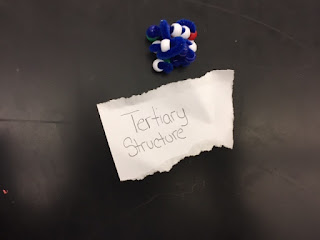Students have all downloaded the AP Biology Test Prep App to not only prepare for their quizzes and tests in class, but for the AP Exam in May.
The app is helpful because it gives students a question of the day that can be on any random topic. This not only develops familiarity with AP test questions, but tests their knowledge outside of the context of the class. It is easy to recall something you may have just learned in class, but by testing your knowledge randomly you are creating an enduring understanding of the subject!
 |
| An example question of the day. |
Once answered, you get a full explanation of why your answer is correct or incorrect.
The app also allows students to take diagnostic and practice tests, create flashcards, and separate their knowledge by concepts.
 |
| Other helpful portions of the app |
By integrating a technological device that students use all of the time, science is made accessible and even fun!
To download the App for yourself, search for AP Biology in the App store!




































